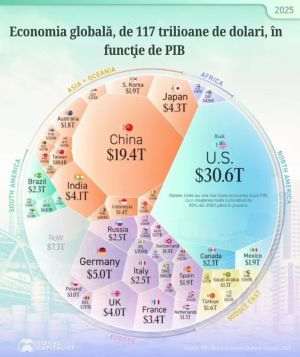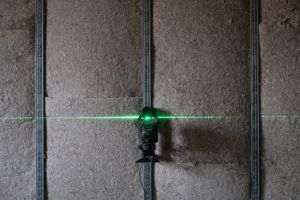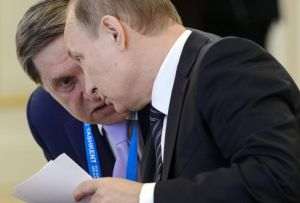Reporter: When will we have the first F35 in Romania?
Gregory Day: First of all, I think everyone needs to understand that we are in the midst of negotiating the sale; we are talking about an agreement to be established between the US government and the Romanian government. On these activities, the public is informed about the significance of this fighter jet, but in terms of the delivery, we are not the ones to determine when it will take place, but we are cooperating with the representatives of the two governments to make sure that in g capabilities that they It has. this aircraft, capabilities that we have for line production and delivery of this aircraft. If we take this last factor into account, we are building and delivering 146 F35s per year, but in order to do this - as new contracts are signed - we are not just dealing with single-state deliveries, we are integrating these deliveries into production annual that we ensure globally, to be efficient in terms of requests. Until now, the Romanian government has made a procedure of F16 aircraft and to analyze opportunities to expand its air defense of the territory, it has decided to govern F35 aircraft, but the two things will be determined and when they will be delivered to your countries . the first fighting machines. This also depends on production, what we have in the works, and the delivery will span several years.
Reporter: The recent GAO report shows that some of the F35 fighter jets faced software problems, even during some operations, at which time the respective system - TR3 - was restarted according to the statements given to the American commission by several pilots . . According to the report, but also information published in the media - the most recent is an article in the Berliner Zeitung - almost 100 F35 fighter jets are on the ground, facing problems with this software and other maintenance problems.
Gregory Day: This is about Tech Refresh - TR 3, with a hardware system, but we should make a comparison with the computer that everyone has at home. It has been working for a long time, during which it has provided you with everything you needed, but it needs upgrading to bring your personal computer to a new standard of operation. What we have now with the TR 3 is to make a new hardware and a new software system that will be installed in the cockpit with a faceted memory, which will lead to an increase in the capability of the F35, making it the best performing aircraft in the series . yes, of all times. Right now with the US government we are doing more tests of the new hardware and software systems, so soon the capability will be ready for delivery. We have 95% of the capabilities in flight tests, we will continue to work on this software, not wanting the quality and safety for this aircraft, including the difficult conditions, to make sure it works correctly and to increase the performance constantly. If it seems to you that this process is taking too long, it is because we are waiting for the decision of the US government to receive the new fighter aviators. In the meantime, we continue to build F35s to make sure we can deliver them as soon as possible the US government or allied governments participating in this program are ready to receive them.
• "We have teams of experts who analyze the potential of companies in the defense sector"
Reporter: I asked you about these issues because in Romania, as in other NATO allied states, there are people who ask questions about the F35 plane when the GAO reports appear in the media and who turn into opponents of such a purchase.
Gregory Day: For clients in this program I think it would be interesting to look at what's happening in other countries, like South Korea. Several years ago, the authorities there chose to purchase 40 fighter jets, and after seeing what skills this machine has, they decided this year to purchase 20 more F35s. This decision shows the confidence they have in the F35 aircraft and that is why we want to maintain that confidence. Therefore, if we also look at the fact that this year the Czech Republic signed a G2G agreement for the purchase of 24 F35 aircraft, for me it shows why I need to focus on making people understand what the real capability of this fighter jet and how valuable it is. So for people who are skeptical about Romania's purchase of the F35, I have a piece of advice: do some research on this aircraft, its capabilities, how it has performed in theaters of operations and its recorded performance.
Reporter: It is known that some of the F35 components are already made by the Aerostar Bacău company. How is working with this company? Do you think in the future to expand this collaboration with other companies in the defense industry in our country?
Gregory Day: At this moment we are focusing to see what is the interest of the Romanian government and what are the interests of the entire defense industry in your country regarding the entire spectrum of the future defense system. We are looking to support the efforts of companies in Romania to move to fifth generation capabilities. What we have done so far with Aerostar Bacău regarding the F16 planes, represents a strategic partnership that we want to have in any country we collaborate with. We have a successful cooperation with this company, we want to expand this cooperation in a wise, long-term way, because it is a strategic partnership based on trust. Aerostar Bacău is a very important partner for Lockheed Martin, and if the opportunity for the Romanian state to purchase F35 aircraft materializes, this partnership will develop in the long term. We will also be looking for other local defense industry companies to partner with. When we sign such a contract with an allied country, we commit to being involved in supporting the defense industry of that country. We have teams of experts who analyze the potential of defense sector companies, to understand in which areas they are interested in carrying out certain works, and then we draw up projects to make these interests a reality. We are basically talking about a win-win partnership.
Reporter: Can it be said that our country's purchase of Black-Hawk helicopters is a win-win deal?
Gregory Day: Our partners at Sikorsky are very pleased with the way this contract is being implemented.
Reporter: What is Lockheed Martin's business plan for Romania?
Gregory Day: We are pleased with the interest shown by the Romanian government in the F35 and offer our support for negotiations with the US government to continue.
• "Stealth is a huge advantage that the F35 fighter offers compared to the F16"
Reporter: What are the differences in operation, handling, of the F35 fighter compared to the F16, which the pilots of the Romanian Air Force have already specialized in? Is the F35 easier to operate or are the differences not significant?
Monessa Balzhiser: From the pilots' point of view, the transition from the F16 to the F35 depends on the experience they have gained in flying the F16 fighter. What I can tell you is that from a flying point of view the handling of the F35 is very easy, because a lot of the existing systems on this plane are also on the F16, and the configuration of the combat system is similar to that of this aircraft. What matters for example in transitioning pilots from the F16B to the F35 is to get comfortable with the idea that there is only one seat in the cockpit and to have a single-engine flying mentality. The biggest jump for F16 pilots moving to the F35 is how they look at the data, the information coming in, because the capabilities that the F35 provides involve a greater awareness of the situations that the pilot is going through during combat operations. They must be careful to collect all this data, to disseminate to those on the ground.
Reporter: Does the Stealth system installed on the F35 make the fighter invisible to radars, as they say?
Monessa Balzhiser: Stealth is a huge advantage the F35 fighter offers compared to the F16. That's why pilots need to understand certain tactical changes. Stealth is incredible, a capability that allows the aircraft to have a much smaller radar footprint, and a key role in this is played by how the F35 is handled by the pilot. This does not mean that the fighter plane is completely invisible, but that it is difficult for the enemy to detect and track it on radar.
Reporter: A question for both of you. In these times when Artificial Intelligence is on the global agenda, are you afraid that AI will take your place in the future? When do you think we might see an unmanned fighter jet? Over 30 or 50 years?
Monessa Balzhiser: I can't talk about AI, but what I can say is that the role of a pilot in the airplane is to use all the equipment, to be able to understand it, and that the transmission of information is the main key to handling the F35.
Gregory Day: From my point of view, I see a lot of interest in unmanned aerial systems. We already have systems that are operated by remote control from the ground by pilots, but where the technology will go in the long term I don't know at this point. We have teams of engineers engaged in research and innovation, to access the new opportunities offered. As for the development of the F35, there are 18 countries that are participating in the permanent upgrade of this fighter and that plan for the F35 to be used for the next 30-50 years. In other words, we are not considering at this moment the replacement of the current system, which is one based on the latest technology and which is the fastest fighter in the world. What technology will bring us in terms of handling this plane, I think only children these days could predict.
Reporter: Thank you!
























































